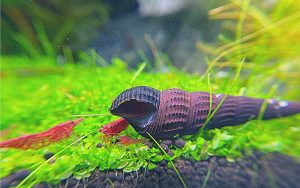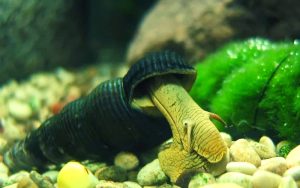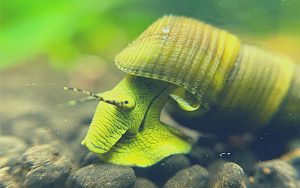If you’re a pet owner, then it’s likely that you’ve heard about the appeal of ghost shrimp as an addition to your aquatic setup. They come in vibrant colors and offer an exciting display for tanks and aquariums. But just how big does ghost shrimp get?
That’s what we aim to answer today; from average lengths to getting wider varieties – we’ll clear up all the confusion surrounding these fantastic little creatures! Read on to find everything related to the size of this curious species.
Have you ever heard about ghost shrimp but needed to figure out how big they got? We’ve all been there – so many questions, not enough answers!
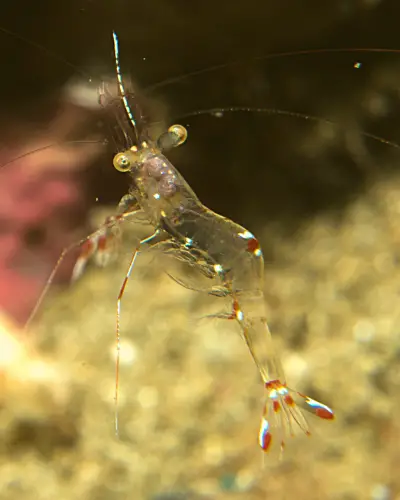
Ghost shrimp are famous in the aquarium hobby, and ghost shrimp size can be hard to determine due to myths and stories circulating them.
In this blog post, we’ll talk about what you must know about the size of these fascinating little creatures so that you can make an informed decision on whether or not ghost shrimps are suitable for your aquarium.
So let’s dive right into it – what is a ghost shrimp’s average maximum adult size? Read on to find out!
Table of Contents
ToggleWhat type of animal is Ghost Shrimp?
Ghost Shrimp are crustaceans of the family Palaemonidae. They don’t feel like aquatics and have stayed in lakes; instead, they do it in a completely different way from other fish.
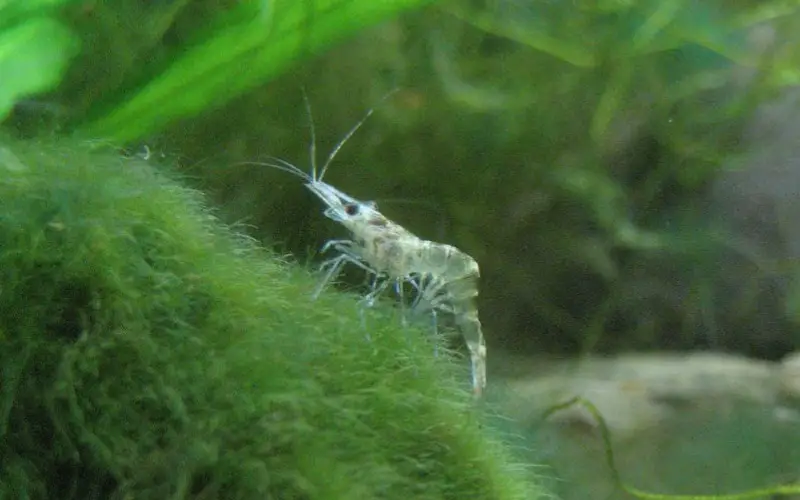
They are shrimps with transparent bodies that look fantastic and may make excellent aquarium companions with other fish in freshwater aquariums.
Ghost Shrimp vary in color from transparent to dark brown, depending on their environment. They have two pairs of antennae and eight legs and can reach up to 1 ½ inches in length.
How Fast Do Ghost Shrimp Grow?
Did you know that Ghost shrimp grow all their legs and transform into mini adults in just 1-2 weeks? It’s true! And after just five weeks, they’re fully grown and ready to be transported back to their home tank.
Ghost shrimp (also known as glass shrimp) are relatively fast-growing crustaceans.
However, Grass shrimp growth rate can vary depending on several factors, including their age, diet, water quality, and environmental conditions.
Generally, juvenile ghost shrimp can grow up to 1/4 inch per month. As they mature, their growth rate gradually decreases, and they may only grow 1/8 inch per month. However, some ghost shrimp can grow faster or slower than this, depending on the abovementioned factors.
Providing them with a well-balanced diet and maintaining good water quality in their aquarium is essential. To ensure that your shrimp grow at a healthy rate, Additionally, you should avoid overcrowding the tank, as this can stunt their growth and cause stress.
How Big Does Ghost Shrimp Get?
How Big Do Freshwater Ghost Shrimp Get? Ghost Shrimp come in different sizes depending on their age, but they typically reach a length of around 1 1/2 inches. When fully grown, their width is generally equivalent to a pencil eraser.
Compared to Amano Shrimp, Ghost Shrimp are generally slimmer and more streamlined in appearance.
Ghost shrimp (also known as glass shrimp) are relatively small crustaceans, and they typically grow to an average size of 1.5 inches to 2 inches (3.8 to 5.1 cm) in length. However, their size can vary depending on several factors, including their age, diet, water quality, and environmental conditions.
In some cases, ghost shrimp may grow slightly larger than the average, while in others, they may remain smaller. Notably, female ghost shrimp tend to be somewhat larger than males.
Ghost shrimp are relatively small, peaceful creatures that can make fascinating additions to a freshwater aquarium. They are trendy among aquarists due to their transparent bodies, allowing you to see their inner workings and behaviors.
What Factors Affect the Growth of a Ghost Shrimp?
Factors affecting the development of Ghost shrimps include water temperature, food intake, fish tank size, and spawning season. Illnesses may affect shrimps in varying amounts and aggressive shrimp tankmates who compete for a meal.
Let’s learn more about the factors that may affect a Ghost Shrimp’s growth.
- Water Temperature: An aquarium’s temperature should be between 65 to 80 degrees Fahrenheit for Ghost shrimps to thrive. Too hot or cold temperatures can slow their growth rate, and too much fluctuation can be fatal.
- Food Intake: Feeding ghost shrimps high-quality foods like algae wafers and other tank-safe vegetables will help them grow bigger. Too little food may stunt their growth or cause malnutrition, while too much can lead to obesity and dangerous ammonia levels.
- Tank Size: Ghost shrimps need plenty of space to swim around and live in peace. A small tank may slow its growth rate due to overcrowding and poor water conditions, so aim for at least 10 gallons per shrimp.
- Spawning Season: Ghost shrimps are most likely to spawn in the spring season and early summer months. They may be more active and energetic during this time, resulting in faster growth rates.
- Illness: Ghost shrimps can become sick or injured like any other living creature. Diseases, parasites, and bacteria can stunt a shrimp’s growth, so monitoring its health is essential.
- Tank mates: Ghost shrimps can be easily intimidated or eaten by more extensive, aggressive fish tank mates. If a ghost shrimp is always on the defensive, this can cause them to stress and slow down their growth rate.
It’s best to keep freshwater shrimps in a separate tank of their species or with other peaceful aquarium inhabitants. Shrimp burrows offer protection from predators and leftover food, making them a desirable habitat for many small invertebrates.
Note: Shrimp Ghost are opportunistic eaters who consume dead shrimp or dead fish in addition to their regular diet.
Ghost Shrimp Habitat
What is a Ghost Shrimp’s habitat? The ghost shrimp always prefers living among aquatic plants and living animals. Typically these species’ live plants flourish in swollen or slightly brackish waters, particularly in lakes.
Ideally, you should make your Shrimp tanks look attractive and decorated with rock or vegetation where they can hide to look nice and fresh.
Ghost Shrimp usually prefer a pH level 6.5 and temperatures ranging from 72 to 79 degrees Fahrenheit (22 to 26 Celsius).
They are also known to be scavengers, so you must include plenty of food sources for them in their environment.
You can add some floating or sinking algae, shrimp pellets, blanched vegetables, fish flakes, or even live brine shrimp.
Ghost Shrimp Molting
Like every shrimp, ghost shrimp undergo molting when their old carapaces are too tiny and unable to grow to accommodate the new body. Molting of the shrimp can occur between one and three times every year.
Old shrimp molt about once per month. When a few shrimp is ready for removal, the ordinarily transparent body becomes somewhat transparent when new shells build beneath it.
When the shrimps are molting, they curl up, and the old shells split at the junction between the tail and cephalopods. The larger fish will first remove the back of the infected shrimp from its body and then the front. It is challenging to know which shrimp have been molted in large groups.
Ideal Shrimp Tank Conditions
If you go into the pet store, it will probably be a ghostly shrimp inside a small tank without any decorations. These shrimps were given the role of bottom-feeder fish. If you want to keep your shrimp as pets, you want to provide the animal with the most comfortable place to reside.
Your shrimp’s tank should be at least 10 gallons, and you want to make sure that the temperature is between 65°F-80°F (18°C-27°C). The water pH should be between 6.4 and 8.0; however, around 7.2 is ideal for them.
Also, ensure plenty of room to swim and hide with decorations like plants and rocks. This will give the baby shrimp the security to feel safe and reduce aggression in their tankmates.
Lastly, it is crucial to keep up with weekly water quality checks and changes to make sure your tank is a safe environment for ghost shrimps. Make sure to research their ideal water parameters and monitor them frequently.
By ensuring your tank is correctly set up, you will be well done on your way to a healthy tank clean and happy shrimp community!
Good and Bad Tank Mates
Ghost shrimp do most well with calm, small fish or other feeder animals. Often found with companion fish are barb fish, goldfish, and tetra fish.
When you want a better alternative bottom feeder to affect ghost shrimp, you can also use red cherry shrimp, berried ghost shrimp, and Amano shrimp.
You also have freshwater snails, kuhli loaches, and Cory catfishes in your community and tank mates and diet. The same species can aggressively spot bad tankmates. The following list contains several specialized species: from notorious aggressive cichlid species to territorial Oscar.
For this cause, researching the species you will add to your aquarium before purchasing them is always a good idea. This will help you ensure that your aquarium is set up for success and avoid having any aggressive species in the habitat.
Adding the right combination of tank mates allows you to enjoy watching your Shrimp Ghost thrive and grow. In addition to keeping the ghost shrimp community tank together, it helps prevent them from getting stressed or hurt by their tank mates.
How Long Do Ghost Shrimp Live For?
On average, they live for about 1 to 2 years in captivity, although ghost shrimp lifespan can vary depending on many factors, including their age, diet, water quality, and environmental conditions.
To help your shrimp live a long and healthy life, they must have a well-balanced diet and maintain good water quality in their aquarium. Additionally, you should avoid overcrowding the tank, as this can cause stress for breeding ghost shrimp and fish and lead to health problems.
It’s worth noting that while ghost shrimp have a relatively short lifespan, they are relatively easy to breed in separate breeding tanks. If conditions are optimal, they can produce multiple broods of offspring during their lifetime, which can help to maintain a healthy population in your aquarium.
Will Ghost Shrimp Reproduce in My Tank?
Ghost shrimp (also known as glass shrimp) can reproduce in your tank if the conditions are right. Ghosts shrimp are prolific breeders and can produce multiple times over their lifespan.
However, several factors can influence their breeding success, including water quality, temperature, and food availability.
To encourage ghost shrimp breeding in your tank, provide shrimps with a well-balanced diet and maintain good water quality.
Additionally, you should ensure that the tank has plenty of hiding places for the ghost shrimp care take, such as plants or decorations, as this can help to reduce stress and encourage breeding.
Once the shrimp have bred, the first female shrimp will carry the eggs under her tail until they hatch. The young shrimp will then spend their first few days as planktonic larvae before settling on the bottom of the tank and growing into adult shrimp.
Overall, if you provide the right conditions and care for your ghost shrimp, there is a good chance that they will reproduce in your tank and provide you with a fascinating glimpse into their breeding behavior.
Would They Make a Good Pet?
Shrimp make beneficial pet animals. Shrimp species are essential to aquarium plants to maintain a healthy and functioning freshwater tank environment similar to their natural habitat. Ghost shrimps are also generally kept by anglers who need to become more familiar with fish.
This species is very easy and makes beautiful additions in tropical aquariums composed primarily of more aggressive and gentle fish species. The ghost shrimp’s natural beauty is an added benefit to any aquascape.
How Often Do Ghost Shrimp Breed?
Under optimal conditions, ghost shrimp can breed every few weeks, and females can carry multiple batches of eggs simultaneously. The offspring go through a larval stage before relaxing on the bottom of the tank and developing into adult shrimp.
The frequency of breeding in ghost shrimp also depends on age, with younger ghost shrimp females breeding more often than older individuals, but this can vary based on individual, size ghost shrimp, and tank conditions.
With proper ghost shrimp care and optimal conditions, you can witness the awe-inspiring breeding behavior of ghost shrimp, making them an intriguing addition to your aquatic collection.
Do Ghost Shrimp Like to Be in Groups?
Did you know ghost shrimp are social creatures that thrive in groups? Mimicking their natural behavior in the wild can reduce stress and promote natural behavior. In tanks, they establish social hierarchies and forage together.
However, be aware that they can be territorial if overcrowded or limited in hiding places. To ensure peaceful coexistence, provide plenty of hiding places and enough space to establish individual territory.
For optimal health and behavior, keep at least 3-5 ghost shrimp in your aquarium if there are sufficient space and hiding places.
How to Care for Ghost Shrimp Eggs?
Raising Ghost Shrimp eggs from hatching into adulthood is no easy feat – most people have yet to learn it’s possible to do so.
Not only that, but many things need to be clarified about how to care for them properly. With the correct information and knowledge, these tiny shrimp can avoid dying prematurely or not reaching their full potential.
Thankfully, we have the answer! This video guide provides step-by-step instructions on successfully hatching, raising, and caring for your Ghost Shrimp eggs. With this guide, you can provide your Ghost Shrimp with proper care quickly and easily.
Ghost Shrimp Price:
On average, a single ghost shrimp can cost anywhere from $0.50 to $2, depending on the size and quality of the shrimp. However, many pet stores and online retailers offer bulk discounts for larger quantities of shrimp, which can reduce the overall cost per shrimp.
Additionally, the price of ghost shrimp may be higher or lower, counting on the region where they are being sold. In some areas, they may be more common and, therefore, less expensive, while in others, they may be rare and more expensive.
If you want to purchase ghost shrimps, hanging around and comparing prices from various merchants to find the perfect deal is a great idea.
Additionally, it’s vital to ensure that the shrimp you purchase are healthy and of good quality, as this can help to ensure their long-term success in your aquarium.
Ghost Shrimp Breeding: How to Raise Ghost Shrimp?
Ghost shrimp are relatively easy to raise and care for. Here are the fundamentals you should know:
- 1. Aquarium Setup – The tank should have a sand or fine-grained gravel substrate, no sharp objects (to prevent injury), proper filtration, and regular water changes. Some live plants, such as ferns or hornwort, can also be added—as long as the plants don’t require too much light, they will thrive in almost any aquarium conditions.
- 2. Temperature – Ghost Shrimp prefer water between 72-78F with a pH of 6-8. A thermometer should always be used when monitoring the temperature in your tank.
- 3. Feeding – Glass shrimp are scavengers, so they eat anything that falls into their tank, from fish food to decaying plant matter. They also like algae wafers and blanched vegetables such as zucchini or cucumber, which provide them with essential vitamins and minerals for growth and reproduction – Make sure not to overfeed!
- 4. Breeding Ghost Shrimp & Life Span– Female ghost shrimp will carry their eggs in a pouch beneath their tail until it hatches after two weeks, then release baby shrimp into the ghost shrimp tank; these baby shrimps increase if there is enough food available and start producing young of their own at around five months old if kept well fed/appropriately maintained!
The average life span of ghost shrimps is 12 – 18 months, but some reports state up to 4 years!
Commonly Asked Questions about Ghost Shrimp Size (FAQ)
Can Ghost Shrimp and Betta Fish Live Together?
Ghost shrimp and bettas can live together in the same tank or aquarium, but it’s essential to take certain precautions to ensure both species can coexist peacefully. Betta fish are familiar with their aggressive behavior and may view smaller creatures like glass shrimp as prey.
How Many Ghost Shrimp Can You Have in a 5-Gallon Tank?
A 5-gallon tank can suit a small group of ghost shrimp species. Still, the maximum number of ghost shrimp species you can keep together will depend on several factors, including the shrimp size, the amount of décor and plants in the tank, and the water quality. Generally, you can keep up to 15-20 adult ghost shrimp in a 5-gallon tank.
What Does a Pregnant Ghost Shrimp Look Like?
A female pregnant ghost shrimp carrying eggs will appear visibly larger and fuller in the abdominal area. The eggs will be visible as a cluster of small, round, and yellow or greenish spheres under her tail.
How Big Do Adult Ghost Shrimps Get?
Adult ghost shrimp (also known as glass shrimp) typically reach an average size of 1.5 to 2 inches (3.8 to 5.1 cm) in length. However, their size can vary depending on several factors, including their age, diet, water quality, and environmental conditions.
How Big Does a Baby Ghost Shrimp Get?
Baby ghost shrimp (glass shrimp) start as tiny, almost microscopic larvae barely visible to the naked eye. As they grow and develop, they will go through several stages of growth, shedding their exoskeletons periodically as they grow.
How many Ghost Shrimps are there in the world?
Ghost Shrimp are found everywhere on the Earth. These animals can be used as tankmates along with other animals and aquarium animals. It is also difficult to quantify a number that accurately estimates the overall population; in other words, the actual data and the methodology have yet to be presented.
How Big Do Cherry Shrimp Get?
Cherry shrimps (Neocaridina davidi), also known as the freshwater shrimp or cherry red shrimp, is a small freshwater shrimp species popular among aquarium enthusiasts. They are relatively small and typically grow to an average body size of 1 to 1.5 inches (2.5 to 3.8 cm) in length.
Final Thoughts
So, how big do ghost shrimp get? In conclusion, glass shrimp are a fascinating addition to any aquarium. Though they are small crustaceans, they can still reach the impressive size of up to 2 inches long with a lifespan of up to 2 years, as long as their environment is suitable. Furthermore, due to their hardy nature and social behavior – not unlike other shrimp species – they make for an engaging experience and the perfect pet for both novice and experienced fish keepers alike.
Thus, these minuscule and often alluring animals should be considered when searching for sea life companions. While maintaining conditions specific to their needs can be difficult, the rewards are invaluable. Ghost shrimp offer users an exciting aquatic journey that could never be experienced elsewhere.
You might also like
- How Long Do Ghost Shrimp Eggs Take to Hatch: (Must-Read)
- How Often Do Ghost Shrimp Breed: (A Comprehensive Guide)
- Do Guppies Die After Giving Birth? (5 Causes & Solutions)
- How Many Ghost Shrimp Per Gallon: (Beginner’s Guide)
- How Long Do Ghost Shrimp Live: (Prolong Their Lifespan)
- 5 Best Ghost Shrimp Foods: What do Ghost Shrimp Eat?
- Can Ghost Shrimp Live with Bettas (6 Tips for Peaceful Tank)
- Do Ghost Shrimp Molting: What Does It Looks Like & What to Do?
- Are Ghost Shrimp Aggressive as Pets: (5 Reasons & Proven Solutions)
- Are Ghost Shrimp Neocaridina the Ultimate 10X Color Boosters
- Will Ghost Shrimp Eat Snails: The Answer Might Surprise You!


